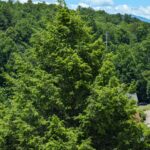The Hemlock and Hemlock Wooly Adelgid
go.ncsu.edu/readext?1006121
en Español / em Português
El inglés es el idioma de control de esta página. En la medida en que haya algún conflicto entre la traducción al inglés y la traducción, el inglés prevalece.
Al hacer clic en el enlace de traducción se activa un servicio de traducción gratuito para convertir la página al español. Al igual que con cualquier traducción por Internet, la conversión no es sensible al contexto y puede que no traduzca el texto en su significado original. NC State Extension no garantiza la exactitud del texto traducido. Por favor, tenga en cuenta que algunas aplicaciones y/o servicios pueden no funcionar como se espera cuando se traducen.
Português
Inglês é o idioma de controle desta página. Na medida que haja algum conflito entre o texto original em Inglês e a tradução, o Inglês prevalece.
Ao clicar no link de tradução, um serviço gratuito de tradução será ativado para converter a página para o Português. Como em qualquer tradução pela internet, a conversão não é sensivel ao contexto e pode não ocorrer a tradução para o significado orginal. O serviço de Extensão da Carolina do Norte (NC State Extension) não garante a exatidão do texto traduzido. Por favor, observe que algumas funções ou serviços podem não funcionar como esperado após a tradução.
English
English is the controlling language of this page. To the extent there is any conflict between the English text and the translation, English controls.
Clicking on the translation link activates a free translation service to convert the page to Spanish. As with any Internet translation, the conversion is not context-sensitive and may not translate the text to its original meaning. NC State Extension does not guarantee the accuracy of the translated text. Please note that some applications and/or services may not function as expected when translated.
Collapse ▲ Hemlocks are magnificent evergreen trees that play a crucial role in the ecosystems of North America. Hemlocks have graceful, feathery foliage and a towering presence. They provide habitat for wildlife, regulate water cycles, and contribute to the aesthetic beauty of forests and landscapes. However, these majestic trees are under severe threat from an invasive pest: the Hemlock Woolly Adelgid (HWA).
Hemlocks are magnificent evergreen trees that play a crucial role in the ecosystems of North America. Hemlocks have graceful, feathery foliage and a towering presence. They provide habitat for wildlife, regulate water cycles, and contribute to the aesthetic beauty of forests and landscapes. However, these majestic trees are under severe threat from an invasive pest: the Hemlock Woolly Adelgid (HWA).
The Hemlock Wooly Adelgid
The Hemlock Woolly Adelgid (Adelges tsugae) is a tiny, aphid-like insect native to East Asia. It was first discovered in the United States in the 1950s and has since spread rapidly across the eastern states. The adelgid attaches itself to the base of hemlock needles, feeding on the tree’s stored starches and injecting toxic saliva. This feeding disrupts nutrient flow, leading to needle loss, reduced growth, and ultimately the death of the tree if left untreated. The white, woolly egg sacs of the HWA are often visible on the undersides of hemlock branches, making early detection possible.
Hemlock Restoration Initiative
 In response to the devastation caused by the HWA, the Hemlock Restoration Initiative (HRI) was established in Western North Carolina. This program is managed by WNC Communities and is a collaborative effort aimed to restore hemlock trees to their native habitats through various strategies. The HRI held a Hemlock Treatment Demonstration at the Old Fort Picnic area on May 16. The demonstration included proper identification of hemlocks and HWA, how to access the health of the hemlock, and different chemical treatment applications for HWA.
In response to the devastation caused by the HWA, the Hemlock Restoration Initiative (HRI) was established in Western North Carolina. This program is managed by WNC Communities and is a collaborative effort aimed to restore hemlock trees to their native habitats through various strategies. The HRI held a Hemlock Treatment Demonstration at the Old Fort Picnic area on May 16. The demonstration included proper identification of hemlocks and HWA, how to access the health of the hemlock, and different chemical treatment applications for HWA.
If you are a homeowner or a landscape professional, treatment is simpler and less expensive than before. If you are looking for information about proper treatment for the HWA, go to the Hemlock Restoration Initiative. They have a wealth of information on their website.




